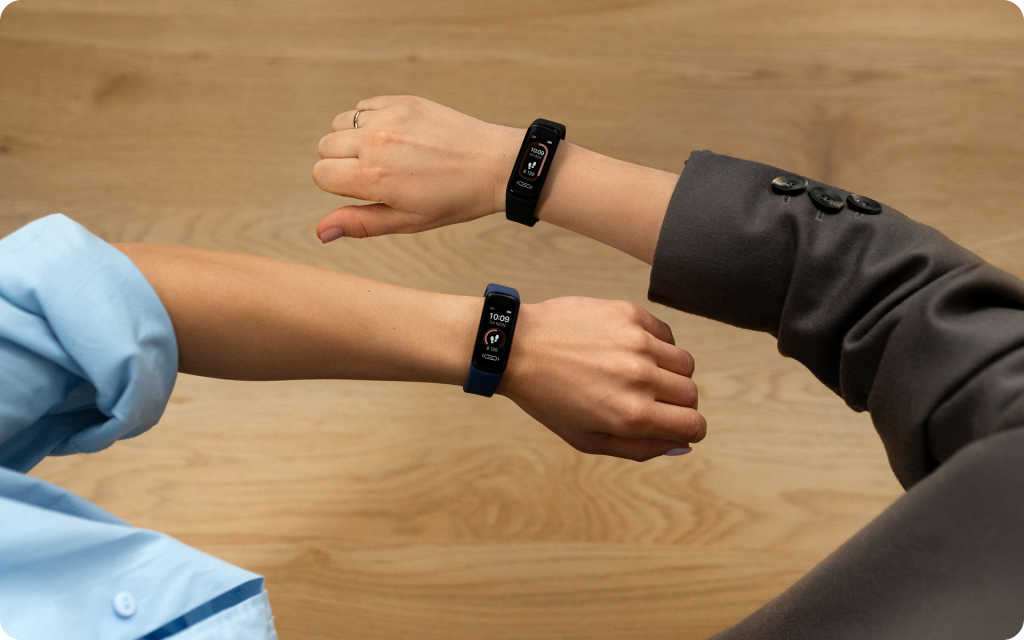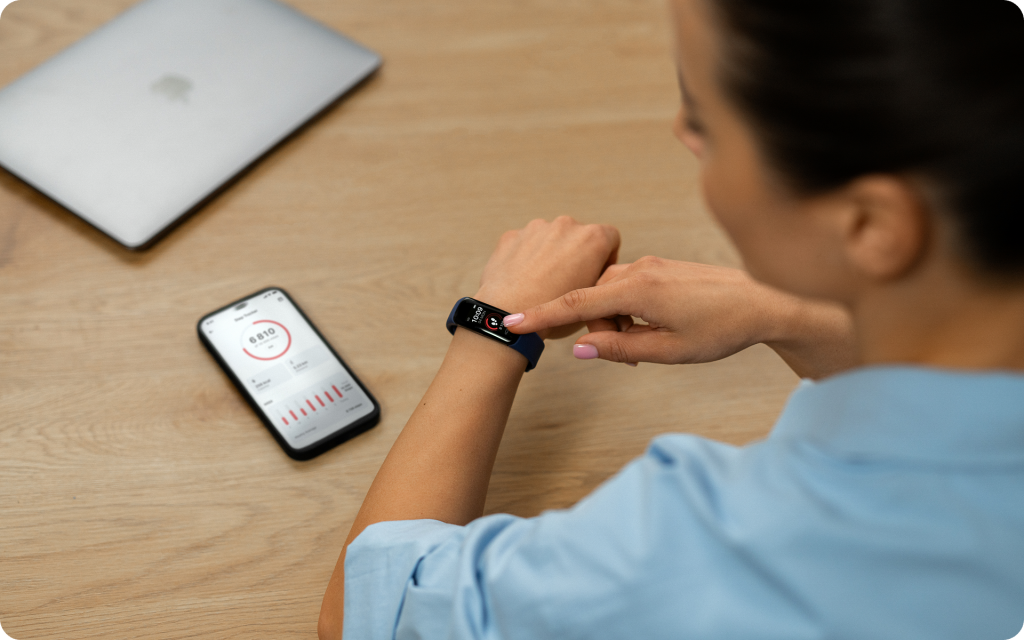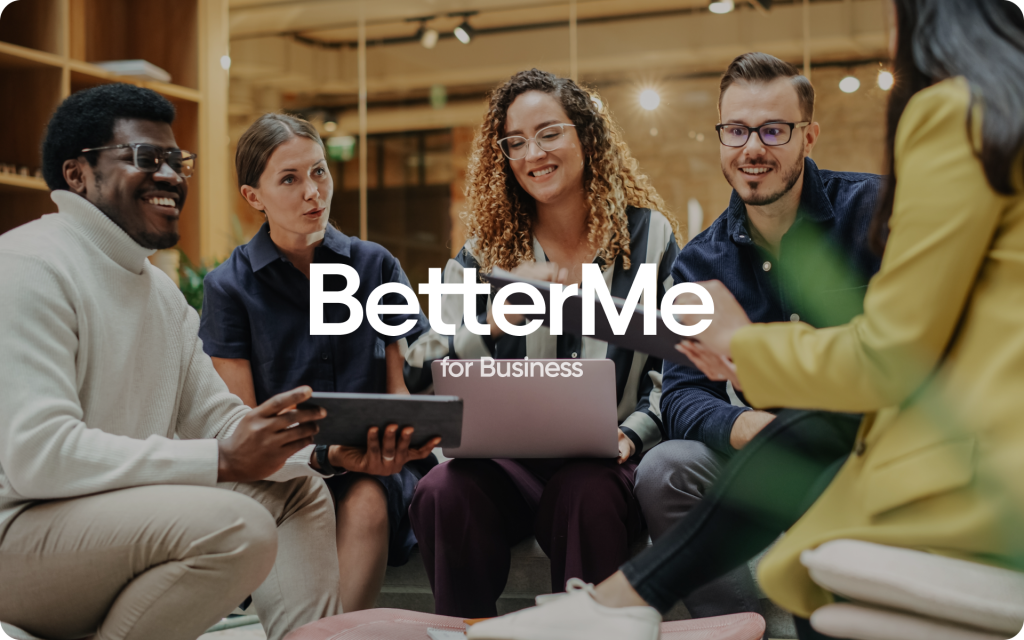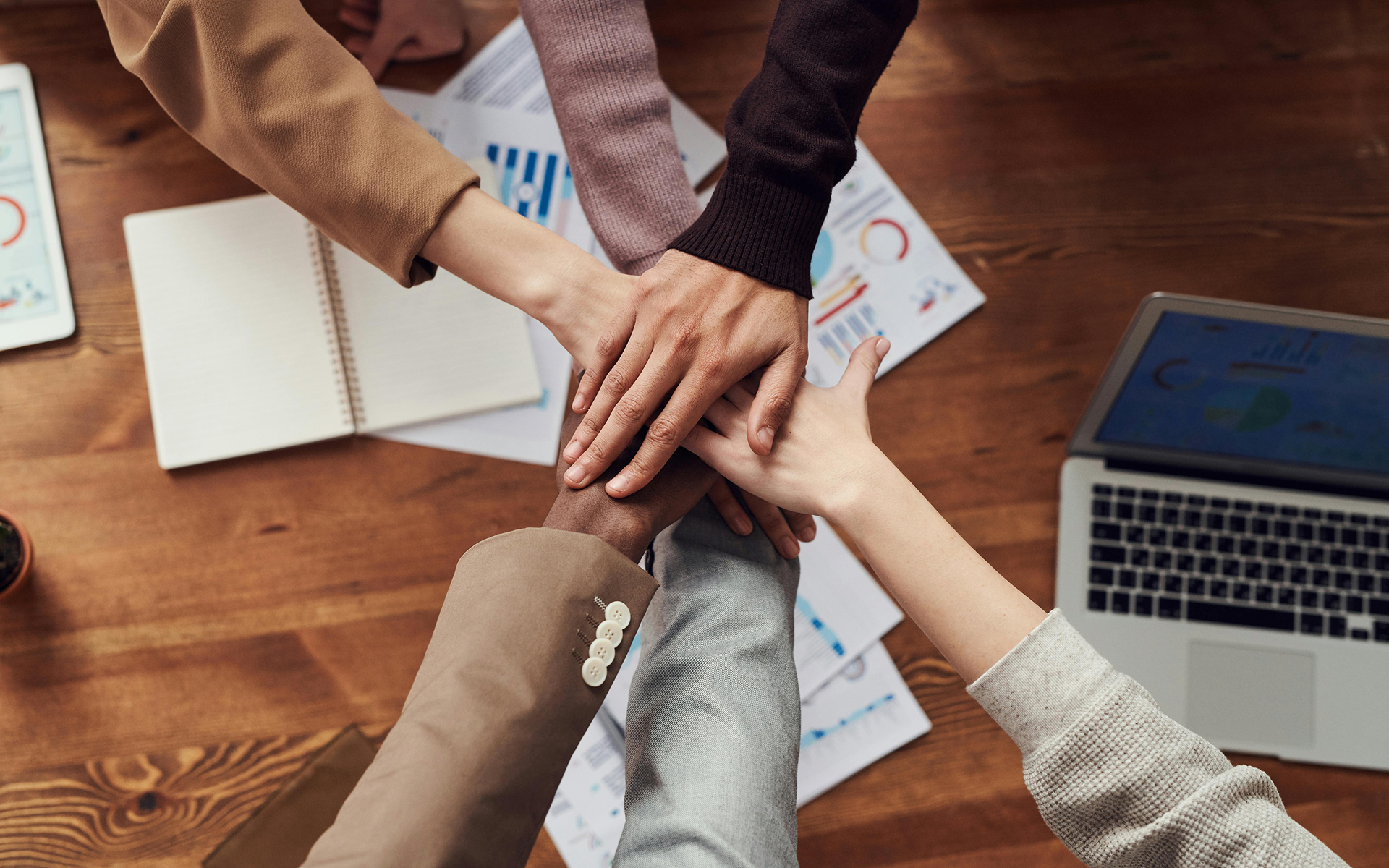Let’s be honest — human resources, today, has become so much more than just hiring or ticking boxes.
HR leaders aren’t just managing people; they’re nurturing experiences, moods, energy levels and yes, employee wellbeing. With remote work, hybrid schedules and the constant ping‑ping of notifications, “work” often bleeds into “life”, and keeping employees healthy, engaged and resilient isn’t a luxury, it’s become essential.
That’s where AI‑powered tools for employee wellness step in. These aren’t cold, faceless systems that just churn data. They’re thoughtful helpers who quietly work behind the scenes, gently nudging someone to stretch when they’ve been on calls for hours; reminding a team member that their health and wellness goals still matter; spotting trends in stress or burnout across a group.
Imagine a tool that senses when a person’s energy is low (or might be heading that way) and suggests a micro‑pause or some breathing space…. It kind of feels like having a wellness compass.
Recent research backs this up: companies that adopt AI in wellness and employee support are seeing positive effects on health outcomes and job satisfaction. For example, studies show AI in workplace wellbeing can help with stress tracking, emotional support and personalised health programmes (1).
Yet, it’s not all smooth sailing; some research reminds us that if AI is deployed without care — lacking fairness, transparency or the human element — it can increase anxiety, job‑insecurity or even isolation (2).
For HR teams who care deeply about people and culture, leveraging AI‑powered tools for employee wellness means shifting from being reactive (“oh no, burnout again”) to being proactive (“let’s catch it before the dip”). It’s about scaling care, not replacing it.
So in the sections ahead, we’ll explore how AI is changing workplace wellness management, why it matters, what kinds of solutions exist, how HR can automate smartly, measure success, ensure adoption, and look ahead to what’s next for AI‑powered tools for employee wellness.
Why Should HR Leaders Invest in AI-Powered Tools for Employee Wellness?
HR leaders are already juggling a lot from recruiting, retention, engagement, and now? The growing pressure to take employee wellness seriously (and scale it across the company). But let’s be honest. Doing all that manually isn’t just hard, it’s unsustainable!
That’s exactly where AI-powered tools for employee wellness come in. These are smart systems designed to help HR teams understand what people need, when they need it most, and how to support them without spending every hour of the day chasing spreadsheets.
You can support more people without more stress
Gone are the days of one-size-fits-all wellness programs. With AI tools, HR teams can finally offer wellness tools for mental health that feel timely and relevant without burning out the people who run them.
Here’s how:
- AI detects early signs of stress or fatigue through patterns in work habits or engagement.
- Employees get gentle nudges like a prompt to take a break, or try a quick breathing video when their activity suggests they might need it.
- Tools adapt based on employee preferences, making support feel less like a corporate memo and more like a personal check-in.
It’s like adding an invisible teammate who’s good at spotting red flags (before they turn into problems).
BetterMe provides members with tailored plans that are based on their unique physical, psychological, and lifestyle needs and health goals. Start using BetterMe corporate wellness solutions to transform your team and business!
It gives you the insights you wish you had
Let’s say you run a wellness initiative and… no one really uses it. That’s frustrating! With AI tools for employee wellness programs, HR doesn’t have to guess what’s working.
Instead, you get clear insights:
- Which types of resources employees actually use
- When they engage most—maybe late afternoons, or after busy sprints
- What patterns signal burnout or drop-off in team energy
And if something isn’t working? You can pivot, fast. That’s a big win.
The data backs this up
This isn’t just a trend.
- Studies show AI can be effectively used to personalise well-being interventions, track emotional health, and detect early signs of burnout (1).
- One report found that organisations using AI wellness solutions experienced improvements in morale and productivity, especially when the tools were focused on reducing overload, not just monitoring it (3).
So, if you’re wondering if AI’s just hype? It’s not. But yes, it still needs to be done right.
A word of caution
Even the best tech can flop if it’s rolled out the wrong way.
Some common traps to avoid(3, 4):
- Tools that feel invasive or too “watchful” can backfire.
- Employees must know how their data is being used. Without transparency? Trust is nothing!
- AI should enhance human care, but not replace it. That balance is everything.
Some companies, they’ve learned this the hard way.
Investing in AI-powered tools for employee wellness isn’t just about following trends. It’s about creating a healthier, more responsive workplace and giving HR teams the space to lead with insight, not guesswork. When used well, these systems make wellbeing more human, not less.
Read more: 15+ Fall Wellness Challenge Ideas to Reignite Employee Engagement
What Are 5 Most Promising AI Powered Tools for Employee Wellness?
The world of AI for employee wellness is growing fast. But here’s the thing: it’s not about finding the fanciest tool, it’s about using the right one for the right job.
Let’s break down five types of AI-powered tools for employee wellness that are actually helping HR teams make a difference without adding more chaos to their already-full plates.
1. Smart Wellness Dashboards for HR Teams
These dashboards are often described as the central nervous system of a modern wellness program. They’re designed to collect, analyse, and present wellness-related data in a way that’s easy for HR teams to understand and act on.
Here’s what they typically do:
Data Aggregation & Monitoring
These systems pull in wellness data from multiple sources:
- Daily check-ins or surveys completed by employees
- Usage data from wellness platforms like meditation or journaling tools
- Wearable device metrics such as steps, sleep or stress markers (when integrated)
- Calendar and work rhythm data from meeting logs and time trackers
The goal is to bring all these signals together into one dashboard so HR doesn’t have to juggle spreadsheets or guesswork anymore.
Pattern Recognition & Predictive Insights
AI helps identify trends that might otherwise be missed:
- Spikes in overtime or missed breaks
- Mood dips across teams or business units
- Sudden drop-offs in wellness tool engagement
- Increases in self-reported stress, fatigue, or emotional disengagement
Rather than waiting on an end-of-quarter report, HR can spot these shifts in real time and act fast. Some dashboards even predict risks, like burnout or absenteeism based on historical patterns. That kind of heads-up—it changes the game.
Department-Level & Individual-Level Views
The more advanced systems let you zoom in and out:
- View team-level wellness “heatmaps” to see where energy is low
- Track changes over time like “February vs. March engagement”
- Compare department averages without exposing individual names
These tools make it easier to tailor support efforts instead of treating everyone the same. Which, let’s be honest, rarely works.
Actionable Recommendations
It’s not just about seeing data. Good dashboards offer suggestions too:
- “Team X shows signs of burnout — consider reducing nonessential meetings.”
- “Engagement dipped this week, send out a wellness reset or breathing reminder.”
- “Energy scores are flatlining post-launch—might be time for a recovery day.”
These prompts help HR teams move from observation to action. And often, that little nudge is what stops a bigger issue from brewing.
Integrations & Reporting
Most dashboards are built to work with:
- Internal messaging tools like Slack or Microsoft Teams
- HR systems of record (to pull job roles, tenure, or location filters)
- Calendar apps and wellbeing plugins
- Wearable data—only when employees choose to link it
Custom reports can be shared with department heads or execs so wellness becomes part of the conversation—not an afterthought
In short, smart wellness dashboards let HR move from reactive to proactive. They give you visibility, timing, and insight and help answer the question we keep hearing: “How’s the team really doing? And what can we do about it right now?”
2. Mood & Sentiment Tracking Bots
Not everyone speaks up when they’re stressed. And honestly? A lot of people don’t even realise they’re burning out until it’s too late! That’s where AI-driven mood and sentiment tracking bots can really make a difference.
These tools use natural language processing and behaviour analysis to understand how someone might be feeling bt without needing them to write a long report or fill out another form. They pick up on patterns, shifts, or small flags that a human might miss, especially in remote or hybrid teams.
How They Work
These bots typically function through:
- Daily or weekly mood check-ins (“How are you feeling today?” with simple sliders or emoji-style inputs)
- Anonymous journaling prompts or short reflections
- Language analysis in optional surveys or internal chat platforms
- Behavioural signals like tone shifts, shorter messages, or low participation in meetings
The goal isn’t to track people. It’s to notice when something feels off without requiring someone to explain it all.
What They Detect
Over time, these tools learn what “normal” looks like for a person or a team. When emotional patterns shift—like consistently lower mood scores or emotionally flat responses, then they flag it.
Sometimes, it’s as simple as nudging someone to take a break. Other times, it might recommend a mental health resource or suggest a wellbeing check-in from a manager.
But they’re not all perfect. Some of them? Try too hard. Go too deep. Ask questions that feel invasive or out of place. That’s why it’s so important for HR to pick systems that protect anonymity, offer clear opt-ins, and never cross the line into feeling like surveillance.
Use Cases That Matter
These bots are particularly valuable in:
- Hybrid or fully remote environments where body language isn’t visible
- Teams going through change or high-pressure cycles (like layoffs, product launches, restructures)
- Moments where early emotional cues can prevent longer-term issues
They don’t replace one-on-one conversations. But they create more opportunities for support to happen before someone hits a wall.
What HR Gets
HR teams can typically access anonymised, aggregated mood trends at the team or department level. These insights help answer questions like:
- Is morale down in a specific region or unit?
- Are certain types of stress peaking during specific projects or timelines?
- Have wellness scores dipped after a company-wide shift?
And here’s the kicker: you don’t always need to see names to take meaningful action.
In short, mood and sentiment tracking bots act as a low-friction wellness signal. They’re quiet. Subtle. But powerful, when done right. And when done wrong? Yeah. People tune out fast.
3. Personalized Digital Wellness Tools
Here’s where AI gets truly personal.
These tools offer micro-interventions throughout the day like little nudges, videos, or breathing exercises, based on what an employee might need right now (5).
These tools use real-time inputs like:
- Calendar data (meeting load, back-to-back bookings)
- App usage patterns
- Mood check-ins
- Physical inactivity or screen time
- Self-reported stress or energy levels
And based on that, the system might nudge a person to:
- Take a short walk or hydration break after sitting still too long
- Do a 2-minute breathing reset between high-stakes meetings
- Log a journal entry when stress signals spike
- Revisit their focus goals after a productivity dip
But here’s the key thing: it’s not just random advice. These tools learn what works for each individual over time. The more someone uses it, the more relevant it becomes.
They also support people in reaching their mental health goals, without needing to dig through an app menu or search for something that fits. It just shows up, right when they might need it. And honestly? That’s a big reason people stick with it.
Some platforms go a step further and align nudges with things like sleep recovery, energy tracking, or even health and wellness goals tied to resilience and mood regulation. These aren’t long workshops. They’re small, quiet moments of care that show up when work gets heavy.
Not everything lands, and sometimes? People ignore the prompts. That’s okay. The idea isn’t perfection, it’s rhythm. Gentle consistency. Not another app yelling for attention.
For HR, these tools mean that wellness isn’t something employees have to “go find.” It’s already there built into their day, delivered when it’s useful, and shaped by what matters to them personally.
And that kind of support? That sticks way longer than a wellness webinar ever could.
4. AI Tools for Mental Health & Healthcare Support
Mental health support can be hard to ask for. Not because people don’t need it, but because the process often feels complicated, formal, or too exposed. That’s where AI-powered mental health and healthcare support tools come in, they make that first step easier, quieter, and more human, in a way.
These systems aren’t designed to diagnose or treat. What they do is help people notice when they’re not okay, give them a safe space to process it, and guide them toward the right kind of support. That alone can change everything.
These tools, often considered part of AI tools for healthcare, help by combining (6):
- Daily or weekly self-assessments (mood, energy, emotional resilience)
- Private journaling spaces that use AI to reflect tone or shifts
- Passive tracking of behaviour or activity (with consent)
- Smart prompts or check-ins triggered by early signs of struggle
For example, if someone’s responses start trending toward low energy and motivation for a few days in a row, the tool might:
- Recommend a mental health resource from the company’s library
- Offer a private, judgement-free journaling prompt
- Suggest a wellbeing break or check-in with someone they trust
The aim isn’t to intervene forcefully. It’s to offer support before things spiral—while it’s still a whisper, not a crisis.
Early Awareness = Better Outcomes
That early awareness piece? It’s key.
Many tools in this category are designed to detect subtle shifts and not just “bad day” indicators, but changes in engagement, communication, or even tone. Over time, they learn what someone’s emotional baseline looks like. When that baseline starts to shift consistently, the system quietly nudges support options forward.
Not everyone will respond the first time. That’s okay. These systems are built for gentle persistence, not pressure.
How They Integrate
AI tools in this space usually plug into:
- HRIS systems (for eligibility, location-based resources, etc.)
- Employee assistance programs (EAPs)
- On-demand counselling platforms or internal wellness teams
They often act as the bridge between early awareness and human care. For example, someone who’s journaling regularly and showing low mood trends might be offered the chance to speak with a coach, or even schedule a session directly, all without needing to email or ask someone in HR.
Privacy Comes First
One important thing here: these tools must be built around clear data boundaries. No employee wants to feel like their mental health is being monitored. So, platforms that do this well always:
- Keep insights anonymous and aggregated for HR reporting
- Make personal tracking fully voluntary and confidential
- Offer opt-ins and clear control over shared data
When that trust is in place? People actually use the tools. They engage. They feel supported, not watched.
5. Learning-Based Wellness & Assessment Tools
This is where AI takes a more educational role and not just checking in on how people feel, but helping them learn how to manage stress, build resilience, and take care of themselves over time.
These tools blend two things that, honestly, haven’t always been connected in the workplace: wellness and learning. And when done right? The impact runs deep.
What These Tools Actually Do
These systems use AI to personalise short-form learning content around topics like:
- Stress management
- Focus and attention training
- Emotional regulation
- Better sleep habits
- Mindset shifts for tough workloads or change
But they don’t just dump a bunch of videos or articles on employees and call it a day. Instead, they adjust what they offer based on:
- The person’s recent mood or energy trends
- What they’ve already completed
- How they responded to past content
- Where they might be struggling right now
So if someone’s been reporting low motivation, the tool might offer a quick session on mental reframing, rather than repeating yesterday’s resilience tips. It adapts. It learns.
Wellness Assessment Tools Included
A key feature in these systems is the inclusion of wellness assessment tools like burnout risk surveys, energy self-scoring, or reflection checkpoints that help people track their own patterns. These aren’t big formal reports. They’re small, lightweight tools that feed back into the system and help personalise support even more.
Over time, these tools help people recognise things like:
- When their energy naturally dips and when it peaks
- Which habits or practices help them stay balanced
- How certain work cycles impact their mental health
Why It Works for HR
For HR, these tools do something really valuable: they turn vague wellness goals into actual, trackable behaviours. You’re not just hoping people “feel better.” You can see whether they’re engaging, improving, and staying consistent.
You also get team-wide insights (without naming names) like:
- How many people are engaging with wellbeing learning
- Which topics get the most interaction
- Whether energy and self-rated wellness scores are rising
The tools don’t promise a total fix but they do offer a way to help people grow their emotional toolkit. And that’s a long-term investment in both wellbeing and performance.
Read more: 7 Innovative Corporate Wellness Ideas for Thriving Workplaces
What Wellness Tasks Can HR Automate with AI Tools?
There’s no shortage of tasks on an HR team’s plate. And let’s face it, wellness programs, while crucial, can get buried under admin-heavy work, manual tracking, and the constant shuffle of priorities.
With AI-powered tools for employee wellness, many of those repeat tasks? They can be automated. That means HR can focus more on strategy and human connection, and less on data wrangling and email reminders.
Here are a few wellness tasks that AI handles surprisingly well (and with fewer headaches):
1. Daily Mood & Wellness Check-ins
Forget sending surveys every week and chasing responses.
AI tools can automate short, daily check-ins by asking how people feel, how they slept, or if they need support (1). Based on the data, the tool can:
- Send follow-up content like wellness tips for employees
- Alert managers (when appropriate) to mood dips in their team
- Recommend breaks, focus time, or calming activities
It’s subtle. Non-invasive. But incredibly helpful.
2. Tracking Progress on Health and Wellness Goals
Keeping track of individual goals is tough especially when everyone’s different. AI makes this easier by:
- Noticing patterns in how people work or engage with content
- Tracking personal health and wellness goals through wearables or app check-ins
- Offering nudges when someone’s slipping off-track (5)
It’s like having a personal wellness coach but one that never sleeps (but not creepy about it!).
3. Recommending Personalised Content and Mental Wellness Videos
AI doesn’t just deliver random wellness videos. It learns what each person needs based on their behavior and preferences.
For example, leveraging AI for employee mental wellness videos means (7) :
- Someone feeling overwhelmed might get a short breathing or grounding exercise
- A person showing signs of fatigue might be guided toward a focus-restoration activity
- Others might receive skill-building content around stress, focus, or emotional intelligence
It’s all part of making support relevant, not generic.
4. Automating Wellness Feedback Loops
Instead of waiting until quarterly reviews, AI systems can(4):
- Collect regular, light feedback on how employees feel about their wellness experience
- Use wellness assessment tools to gauge effectiveness
- Help HR adjust programs in real-time, not months later
No more launching a program and just “hoping” it works.
5. Monitoring Burnout Risk (Ethically)
Some tools can flag early signals of burnout based on behavior like:
- Unusual work hours
- Declining engagement
- Negative sentiment in communications(3)
The key here is to design it ethically. AI tools for employee wellness programs should always be transparent, consent-based, and used to support.
How Can Companies Measure the ROI of AI-Driven Wellness Programs?
Let’s be real: HR teams get asked this a lot: “How do we know all this wellness stuff is actually working?”
And that’s fair. Because if you’re investing in AI-powered tools for employee wellness, you need more than good vibes, you need results!
The good news? AI makes measuring ROI more thoughtful, less surface-level. But it still takes the right strategy to get useful insights.
1. Measure behaviour, not just app opens
Participation rates are… fine. But they don’t tell you much.
Just because someone opened a wellness app once doesn’t mean it had any impact. What you really want to know is:
- Are employees consistently using tools like breathing videos or stress check-ins?
- Are those habits sticking around or dropping off after week one?
- Who’s setting (and actually meeting) their wellness or energy goals?
These patterns are what show whether a program is just a checkbox or something people are actually using.
A 2022 study argues that simply offering wellness programs isn’t enough. True value lies in how well the initiative fits into employees’ daily lives and whether they consistently engage (8). If the design isn’t personalised or relevant, it just becomes background noise.
That means the shift from “60% opened the app” to “30% used the tool 3x per week for a month” is not just a stat tweak. It’s a whole different way of understanding impact.
Are you looking to transform both your business and the lives of your team members? BetterMe corporate wellness solutions provide a holistic approach to physical and mental health that boosts productivity and job satisfaction.
2. Track actual workplace changes
With AI tools linked to calendars, productivity apps, and feedback platforms, you can start to see patterns:
- Are people logging fewer late-night hours?
- Is absenteeism dipping over time?
- Do self-reported focus and wellbeing scores go up?
One study reported companies using AI wellness systems saw a 25% drop in absenteeism, 35% decline in stress-related leave, and 30% boost in self-rated productivity (9). Those aren’t just metrics; they’re business-level outcomes.
3. Link usage to real results
Here’s where AI shines.
You can connect the dots between people engaging with a wellness tool, and the shifts in their work or wellbeing. Maybe someone’s been using a grounding video daily and now logs fewer sick days. Or a manager sees better collaboration from a teammate who’s been consistently journaling with a mood bot.
It’s not perfect math, sure, but it’s meaningful.
And when you can show patterns like that to leadership? Suddenly wellness doesn’t look like a cost, it looks like a strategy.
4. Ask people what’s actually helping
One of the most powerful ROI signals is also the simplest:
Would people miss it if it disappeared?
Automated wellness feedback loops, built into AI systems, can surface this early:
- “Was this tool helpful today?”
- “Would you use it again?”
- “Did it change how you felt?”
These micro-metrics, especially when tracked over time, give you qualitative proof that the tools aren’t just being used; they’re being valued.
How Can HR Teams Ensure Smooth Adoption of AI Wellness Tools?
So you’ve invested in a great AI wellness platform. It’s smart, scalable, and packed with features that could really help people.
But here’s the catch:
If no one uses it, or worse, if they don’t trust it, it’s dead on arrival.
That’s why rolling out AI wellness tools isn’t just a tech project. It’s a human one. And HR teams play a key role in making sure these tools actually get used the way they’re meant to.
Here’s how to get that adoption right (and avoid the common pitfalls):
1. Build trust early and often
If employees feel like they’re being watched instead of supported, things can unravel quickly.
- Be clear about what data is being collected and what isn’t
- Explain how the tool works, and how it protects their privacy
- Emphasise that AI is there to support, not monitor
This is especially important when using AI-driven mental health tools, where sensitivity is higher and trust matters more than ever.
Trust isn’t a one-time memo. It needs to be built into every message, training, and update.
2. Make it part of the flow, not extra work
If the tool feels like “another thing to do,” adoption will drop fast.
Instead, integrate it into platforms people already use:
- Slack? Send wellness nudges there.
- Daily check-ins? Add a 30-second mood prompt.
- Calendar blockers? Let AI schedule short focus breaks.
When a wellness tool blends into someone’s day, like a breathing check-in during a busy afternoon, it becomes part of their rhythm, not a disruption.
3. Get managers on board (or it won’t stick)
Managers don’t need to be wellness experts. But they do need to:
- Lead by example (use the tool themselves)
- Create space for their team to engage without guilt
- Share why wellness is being prioritised (and why that matters)
One misaligned manager who rolls their eyes at a meditation reminder? Can tank adoption across a whole team.
Make sure they know: adoption isn’t just HR’s job; it’s culture work.
4. Set expectations and let employees personalise
Don’t expect everyone to use every feature. That’s just not how people work.
Instead:
- Let employees set preferences (what kind of prompts, how often, what format)
- Offer simple onboarding that focuses on why the tool exists—not just how
- Encourage experimentation, like if someone doesn’t like one feature, there might be another that clicks
You don’t need 100% usage to get results. You need consistent, meaningful usage from the people who need it most.
5. Collect feedback and keep iterating
AI wellness tools aren’t “set it and forget it.” What worked in Month 1 might feel stale by Month 4.
Use:
- Quick feedback prompts (“Was this helpful?”)
- Anonymous surveys
- Engagement dashboards (what’s being used, when, by who)
Then adjust based on what you learn. Change the cadence, tweak the content, or revisit how you’re communicating it. People change. So should the way we support them.
What’s Next for AI Powered Tools for Employee Wellness?
We’re not in the early days of wellness tech anymore.
What started as simple fitness trackers and one-size-fits-all meditation apps has evolved into intelligent, adaptive systems that learn, respond, and grow alongside employees. But this is still just the beginning.
So… what’s next?
1. Smarter personalisation, at scale
AI tools will get even better at learning how people work and how they feel. They’ll move beyond tracking hours or clicks, and into interpreting deeper context.
- Are your Mondays overloaded?
- Do certain times of day drain you faster?
- Which kinds of support actually help you recover?
Future tools will serve wellness tips for employees that go beyond reminders to “take a break.” They’ll suggest specific actions, tailored to emotional and cognitive patterns when they’re needed most. And they won’t feel like spam. They’ll feel intuitive, and even welcomed!
2. Integration with goal-setting and personal growth
Wellbeing is no longer just about bouncing back from stress; it’s about building long-term capacity to thrive.
We’ll see more wellness tools integrated into:
- Health and wellness goals, like movement, sleep, and daily recovery routines
- Mental health goals, like focus, emotional regulation, and mindset training
- Learning and development pathways, where soft skills and wellbeing grow together
3. Ethical AI becomes non-negotiable
With increased adoption comes increased scrutiny.
Companies will need to:
- Make transparency standard
- Offer opt-in models with clear data policies
- Co-create wellness journeys with employees, not just for them
People don’t want to feel managed by machines. They want support that’s empathetic, private, and fair. That line between helpful and invasive will define trust in the next wave of AI-powered solutions.
4. More focus on micro-interventions, not mega-programs
Instead of waiting for a quarterly wellbeing check-in or a once-a-year survey, the future will be made of moments.
Tiny nudges. Two-minute resets. Mood-aware guidance.
Because sometimes the biggest shift doesn’t come from a 6-week challenge. It comes from the right support, at the right time.
The Bottom Line
AI isn’t here to replace HR, it’s here to help us care better, and smarter.
For years, wellness programs relied on general advice, surveys that went nowhere, and reactive steps after people were already burning out. But with the rise of AI-powered tools for employee wellness, that’s starting to shift, for real this time.
When used well, AI gives us a window into what people need, before they say it out loud. It makes wellness part of the everyday flow, not a box to check once a quarter. It’s not perfect. Nothing is. But it’s movement in the right direction.
The challenge now isn’t just adopting the tech – it’s earning people’s trust while doing it. And if HR can strike that balance between automation and empathy? The impact won’t just be measurable, it’ll be felt. Because when we get wellness right, people don’t just stay. They actually thrive!
DISCLAIMER:
This article is intended for general informational purposes only and does not serve to address individual circumstances. It is not a substitute for professional advice or help and should not be relied on for making any kind of decision-making. Any action taken as a direct or indirect result of the information in this article is entirely at your own risk and is your sole responsibility.
BetterMe, its content staff, and its medical advisors accept no responsibility for inaccuracies, errors, misstatements, inconsistencies, or omissions and specifically disclaim any liability, loss or risk, personal, professional or otherwise, which may be incurred as a consequence, directly or indirectly, of the use and/or application of any content.
You should always seek the advice of your physician or other qualified health provider with any questions you may have regarding a medical condition or your specific situation. Never disregard professional medical advice or delay seeking it because of BetterMe content. If you suspect or think you may have a medical emergency, call your doctor.
SOURCES:
- Artificial Intelligence and Employee Well-Being: Exploring Ethical and Practical Implications (2024, AI and Ethics Studies)
- The Role of Artificial Intelligence in Enhancing Employee Well-Being: A Systematic Review (2025, Information & Management)
- How AI Can Improve Employee Well-Being (2025, AACSB Insights)
- Leveraging AI for Workplace Mental Health and Productivity: A Data-Driven Framework (2024, arXiv Preprint)
- Artificial Intelligence Applications in Workplace Health Monitoring: A Review (2025, Frontiers in Artificial Intelligence)
- AI-Based Mental Health Assessment in Organizational Settings: Opportunities and Limitations (2025, BMC Psychiatry)
- AI and Employee Wellbeing: How Artificial Intelligence Can Monitor and Improve Mental Health in the Workplace (2024, ResearchGate)
- Exploring Artificial Intelligence Integration in Corporate Mental Health Programs (2024, Walden University Dissertations and Doctoral Studies)
- AI-Driven Workplace Wellness: New Frontiers in Human Resource Management (2025, AI & Society)






















